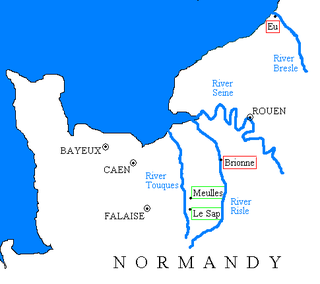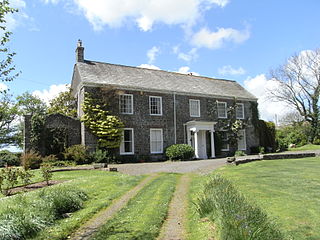
I Rex Willelmus
II Ep(iscopu)s de Execestre
III Ep(iscopu)s Constantiensis
IIII Eccl(esi)a Glastingberie
V Eccl(esi)a de Tavestoch
VI Eccl(esi)a de Bucfesth
VII Eccl(esi)a de Hortune
VIII Eccl(esi)a de Creneburne
IX Eccl(esi)a de Labatailge
X Eccl(esi)a de Rotomago S(ancta) Mar(ia)
XI Eccl(esi)a de Monte S(ancto) Michael
XII Eccl(esi)a S(ancti) Stefani de Cadom
XIII Eccl(esi)a S(ancti) Trinit(atis) de Cadom
XIIII Comes Hugo
XV Comes Moritoniensis
XVI Balduin(us) Vicecomes
XVII Judhel de Totenais
XVIII Willelm(us) de Moion
XIX Willelmus Cievre
XX Willelm(us) de Faleise
XXI Willelm (us) de Poilgi
XXII Willelmus de Ow
XXIII Walterius de Douuai
XXIIII Walterius de Clavile
XXV Walterius
XXVI Goscelmus
XXVII Ricard(us) filius Gisleb(er)ti comitis
XXVIII Rogerius de Busli
XXIX Rob(er)tus de Albemarle
XXX Rob(er)tus Bastard
XXXI Ricardus fili(us) Torulf
XXXII Radulfus de Limesi
XXXIII Radulf(us) Pagenel
XXXIIIIRadulf(us) de Felgheres
XXXV Radulfus de Pomerei
XXXVI Ruald Adobed
XXXVII Tetbald(us) filius Bernerii
XXXVIII Turstin(us) filius Rolf
XXXIX Aluredus de Ispania
XL Aluredus brito
XLI Ansgerus
XLII Aiulfus
XLIII Odo filius Gamelin
XLIIII Osb(er)nus de Salceid
XLV Uxor Hervei de Helion
XLVI Girold(us) capellan(anus)
XLVII Girardus
XLVIII Godebold(us)
XLIX Nicolaus Balistarius
L Fulcherus
LI Haimericus
LII Will(elmu)s et alii servient(es) regis
LIII Coluin et alii taini regis
The Domesday Book of 1086 lists in the following order the tenants-in-chief in Devonshire of King William the Conqueror:
Contents
- Osbern FitzOsbern (died 1103), Bishop of Exeter
- Geoffrey de Montbray (died 1093), Bishop of Coutances
- Glastonbury Church, Somerset
- Tavistock Church, Devon
- Buckfast Church, Devon
- Horton Church, Dorset
- Cranborne Church, Dorset
- Battle Church, Sussex
- St Mary's Church, Rouen, Normandy
- Mont Saint-Michel Church, Normandy
- St Stephen's Church, Caen, Normandy
- Holy Trinity Church, Caen
- Hugh d'Avranches, 1st Earl of Chester (died 1101)
- Robert, Count of Mortain (died 1090), half-brother of the king
- Baldwin de Moels (died 1090), Sheriff of Devon, feudal baron of Okehampton, [1]
- Juhel de Totnes (died 1123/30), feudal baron of Totnes, [2] Devon
- Serlo de Burci Feudal barony of Blagdon,Winterstoke, Somerset
- William de Mohun (died post 1090), feudal baron of Dunster, [3] Somerset
- William Cheever, (Latinised to Capra, "she-goat"), feudal baron of Bradninch, Devon. He was brother of Ralph de Pomeroy (see below), feudal baron of Berry Pomeroy [4] Devon
- William de Falaise, feudal baron of Stogursey, [5] Somerset
- William de Poilley, whose lands later formed part of the Feudal barony of Plympton [6]
- William II, Count of Eu (died 1097)
- Walter of Douai (died c. 1107), Feudal baron of Bampton, Devon [7]
- Walter de Claville, brother of Gotshelm; his lands later formed part of the Feudal barony of Gloucester [8]
- Gotshelm, brother of Walter de Claville; his lands later formed part of the Feudal barony of Gloucester [9]
- Richard fitz Gilbert (died c. 1090), elder brother of Baldwin de Moels, Sheriff of Devon, feudal baron of Okehampton, [10]
- Roger de Busli (died c. 1099)
- Robert of Aumale (Latinised to de Albemarle); his lands later formed part of the Feudal barony of Plympton [11]
- Robert Bastard, whose lands later formed part of the Feudal barony of Plympton [12]
- Richard Fitz Turold (died post 1103-6) (alias fitzThorold, fitzTurolf), whose lands later formed part of the Feudal barony of Cardinham, [13] Cornwall
- Ralph de Limesy, most of his Devon manors passed to the Feudal barony of Bradninch [14]
- Ralph Pagnell
- Ralph de Feugeres
- Ralph de Pomeroy, feudal baron of Berry Pomeroy, brother of William Cheever, feudal baron of Bradninch
- Roald Dubbed, whose lands later formed part of the Feudal barony of Plympton [15]
- Theobald FitzBerner, whose lands later formed part of the Feudal barony of Great Torrington. He was the father-in-law of Odo FitzGamelin [16]
- Turstin FitzRolf, feudal baron of North Cadbury, Somerset [17]
- Alfred of Spain
- Alfred the Breton
- Ansger
- Aiulf
- Odo FitzGamelin, son-in-law of Theobald FitzBerner. [18] His lands later formed part of the Feudal barony of Great Torrington. [19]
- Osbern of Sacey
- The wife of Hervey of Hellean
- Gerald the Chaplain
- Gerard
- Godbold
- Nicholas the Bowman (or "Nicholas the Gunner")
- Fulchere ("Fulchere the Bowman"), most of his lands later became part of the feudal barony of Plympton [20]
- Haimeric
- King's Servants
- King's Thanes













